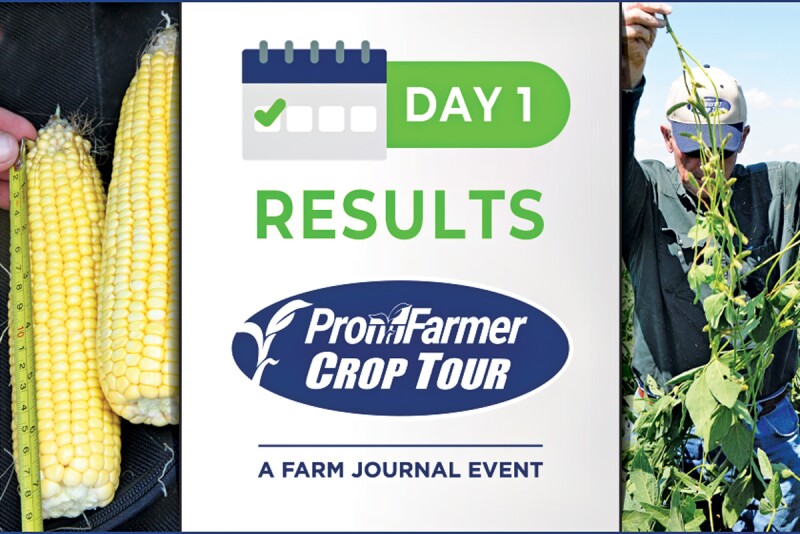From the Rows
Day 1 Western Leg
Chip Flory
Day 1 of the Western Leg of the Pro Farmer Crop Tour is in the books. We had 47 scouts make the trip from Sioux Falls, South Dakota, to Grand Island, Nebraska. The team pulled 77 corn and 76 soybean samples in South Dakota and a bunch of samples from northeastern Nebraska (we’ll talk about those Nebraska samples tomorrow night when we finish the state in Nebraska City). The corn sample count was down 6 from last year... and the reason is a preview of what we’ll be into tomorrow. RCIS is back as a sponsor again this year and normally some of their adjusters come on Tour and run a route. This year, adjusters are too busy dealing with hail damage in Nebraska and simply could not get away from their jobs. We’ll tour that hail area on Tuesday.
South Dakota has two very different corn crops. The first was planted mostly on time and is early to mid-dent. Then the planters got parked for just over two weeks – the later planted corn is mostly in the milk stage. There’s a third crop, too – the replanted crop that was represented on my route by a field that had pollinated within the last week. That variability will make it tough to build a big yield.
There is also a wide range of development in the bean crop. Early planted beans have filled pods and are doing what they can to hold onto yield and even add some weight late in the process. Late-planted beans have flat pods and some fields are still blooming. A year-ago we looked at a bean crop in South Dakota that had fought through a dry year, built yield and got a late shot of rain to hold onto that yield. This year the bean crop still has a lot of work to do to fill pods and maybe add the last clusters at the top of the plants.
The late corn and late beans would benefit from an extra week at the end of the growing season without a frost. A frost on the normal first frost date would likely clip some yield from the later-developing crops.
South Dakota is a “pothole state” – and the potholes are evident in this year’s corn and soybean crops. Those ponded, or drowned-out, spots in fields will need to be accounted for in either fewer harvested acres or in a lower average yield. The holes aren’t as bad (big) or numerous as in 2019, but it’s bad enough that it will be a factor in South Dakota’s final corn and soybean production.
The Tour found an average of 1,025.9 pods in a 3’X3’ square. That’s up 1.27% from year-ago but – as I said – this year’s bean crop has a lot more work to do before the end of the growing season than year-ago. There’s not a lot of difference between last year’s numbers and the data collected today, but South Dakota beans do have slightly more moisture available than year-ago.
The Tour found an average corn yield of 156.5 bushels per acre, down 0.58% from year-ago.
- We counted an average of 84.42 ears in two 30-foot rows, down 5.11% from year-ago.
- We measured an average of 6.78 inches of grain per ear, up 6.44% from year-ago.
- The average number of kernel rows around was 15.94, down 1.6% from year-ago.
Tough spring conditions cut the average number of ears per acre, but the crop made up for most of that loss with a longer grain length per ear.
We also did northeastern Nebraska today – everything east of Highway 281 and north of the Platte River. I’ll have those results for you Tuesday night along with our observations from south of the Platte we will make tomorrow. Briefly – we saw variability in corn in the hills of Nebraska and conditions got more consistent and yield potential improved as we got to flatter ground heading into Grand Island. We’ll see if that trend continues into Tuesday.

